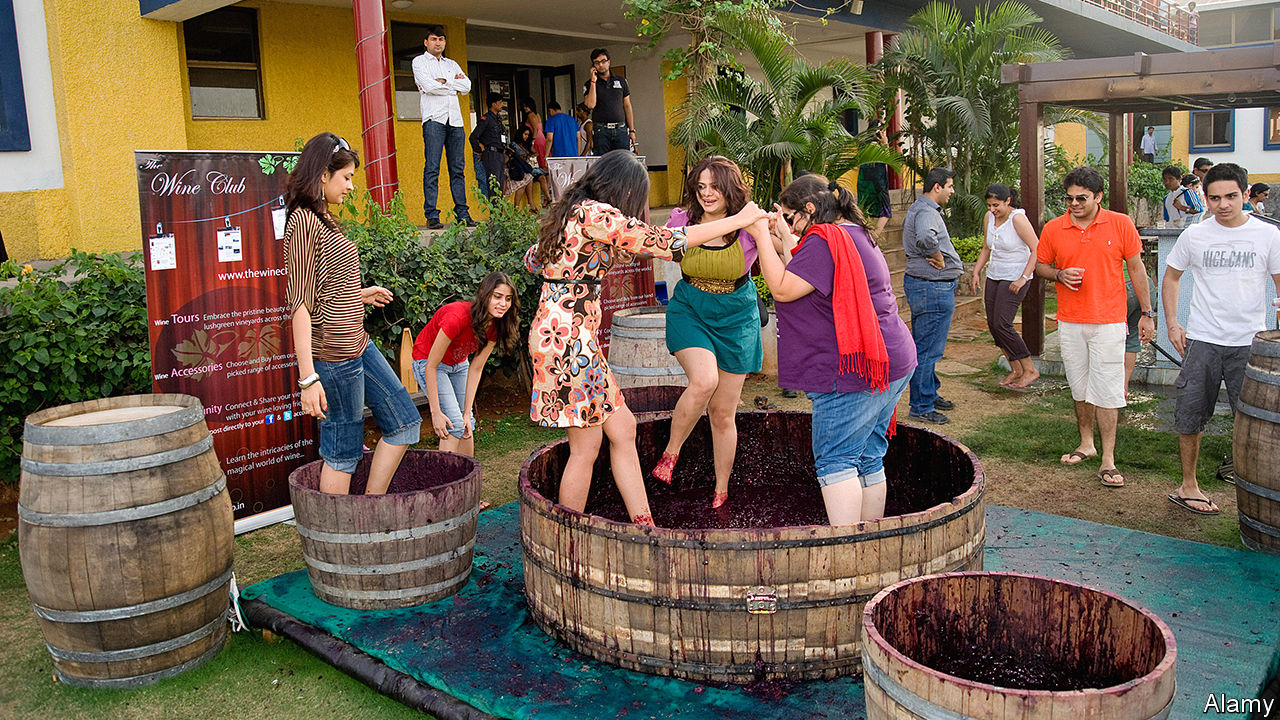Sula’s rich vintages are drawing in the middle classes

Ranging from the soaring Himalayas to the swampy jungles of Bengal, India’s landscape has few rivals for variety. More recently however, tourists have been drawn to a surprising sight, of vines growing on their preferred terrain of gentle hill slopes. Outside Nashik, a city around 160 kilometres north-east of Mumbai, dozens of billboards advertise wineries along the country roads. At Sula, the biggest and oldest of the farms, some 350,000 people visit each year for tours and wine tastings, which happen on the hour. A majority, say staff, will never have tasted wine before.
India is consuming more booze than ever. In 2016, according to the World Health Organisation, each resident on average drank their way through about six litres of pure alcohol per year, mostly whiskies with faux-Scottish names such as “Royal Stag”. That is more than double the figure a decade before. Yet almost nobody drinks wine—last year each Indian consumed on average a little more than a tablespoon. Trying to change that is Sula, which now produces roughly half of the wine consumed in India. In 2018 it became the first Asian winery outside China to sell 1m cases in a year. It is largely thanks to Sula that consumption has grown from a thimbleful to a tablespoon.
Making wine in India is not for the faint-hearted, admits Rajeev Samant, who founded Sula after returning to India from California in 1999. Whereas grapes grown in temperate climates are harvested quickly around September, in Nashik, they are grown in winter, not summer, so are harvested between January and March, an unfamiliar schedule. Intense heat means that, once bottled, the wine has to be transported in lorries filled with dry ice to stop it oxidising on the way. Then there are the regulations: each of India’s 29 federal states has its own alcohol policy, and alcohol-sellers require licences from each.
Most of Sula’s wines are not going to take the world by storm. They tend too far towards the sugary side for most mainstream taste. “The Indian consumer does have a sweet tooth,” admits Karan Vasani, the firm’s chief winemaker. But that probably does not matter. Mr Vasani sees his mission as making wine accessible. His market is the fast-growing English-speaking middle class, not wine snobs. Clever marketing, as well as sugar, helps the medicine go down: among other things, the firm runs one of the biggest annual dance-music festivals.
Why make wine in India at all, when places like Australia have plenty to spare? It is true that without import tariffs of 150% the business might not exist. A bottle of Sula still costs a lot more than a bottle of decent imported wine would if it were traded freely. But before Sula, almost no Indians thought to try wine, and would have struggled to find it. Today it is available in bars in big cities. Foreign winemakers should hope the new taste does not wither on the vine.
No comments:
Post a Comment
Note: Only a member of this blog may post a comment.